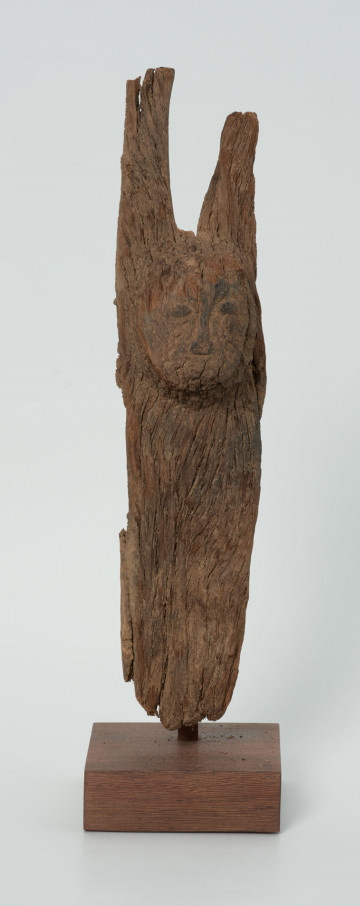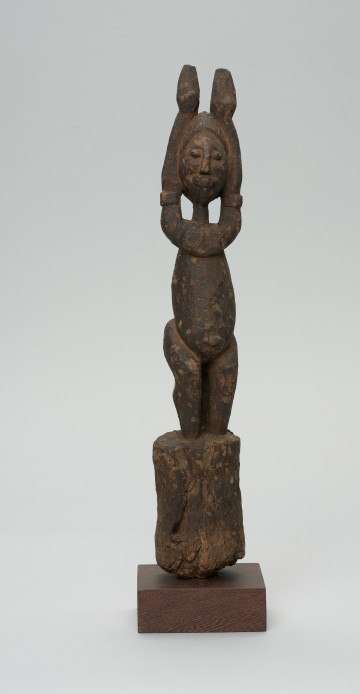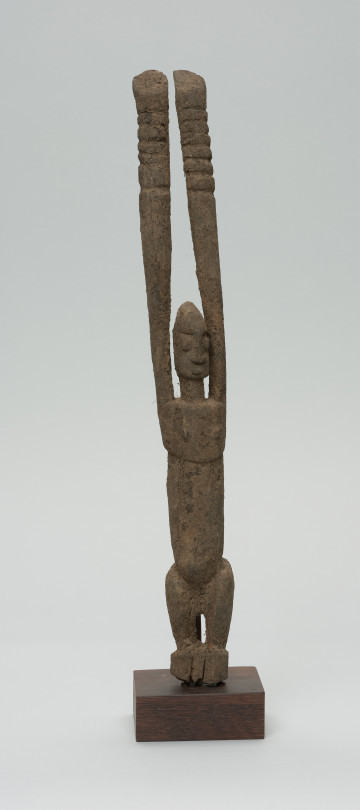
Figure - ancestor
między 1901 — 1950
National Museum in Szczecin
Part of the collection: Collection of Dogonian art
The Dogon are above all farmers. The calendar of fieldwork and the success of the harvest depend on the timely start of the rainy season and its abundance, which lasts in Dogon country from June to October, with a small break in rainfall in the second half of August. The average annual rainfall is 200-500 mm. One of the Dogon myths explains the existence of two different seasons: rainy and dry, as the result of the rivalry and battle fought between Amma and Lebe. In the Dogon country, there are special andugo altars on which sacrifices are made to bring rain. Andugo are dedicated to the deities of Nommo, present in all waters, including the rain. These altars consist of stones, which according to the Dogon were sent by the Nommo along with the rain, iron hooks called gobo and wooden figures. After the sacrifice is made, a fire is lit near the altar whose thick smoke is supposed to attract dark rain clouds. According to Dogon mythology, the first rain appeared when the Ark of Nommo landed on Earth with the first ancestors. This rain symbolised the seed of Nommo, had purifying properties and made the earth fertile and fertile.The statue shows the figure of the ancestor with his hands raised in the air. The gesture is interpreted as a prayerful effort to unite earth and sky. The sign of this alliance is the rain, so important for farmers. It is believed that originally the Tellem, mysterious people who inhabited the Bandiagara Escarpment before the arrival of the Dogon, carved their ancestors in this way. This motif became part of the Dogon tradition and today the connection with the Tellem is only evidenced by the name tellem used to describe the figures.
Ewa Prądzyńska
Other names
tellem; dege
Author / creator
Dimensions
cały obiekt: height: 33 cm, width: 6 cm
Object type
figure
Creation time / dating
Creation / finding place
Identification number
Location / status

między 1901 — 1950
National Museum in Szczecin

między 1901 — 1950
National Museum in Szczecin

między 1901 — 1950
National Museum in Szczecin
DISCOVER this TOPIC
National Museum in Lublin
DISCOVER this PATH
Educational path